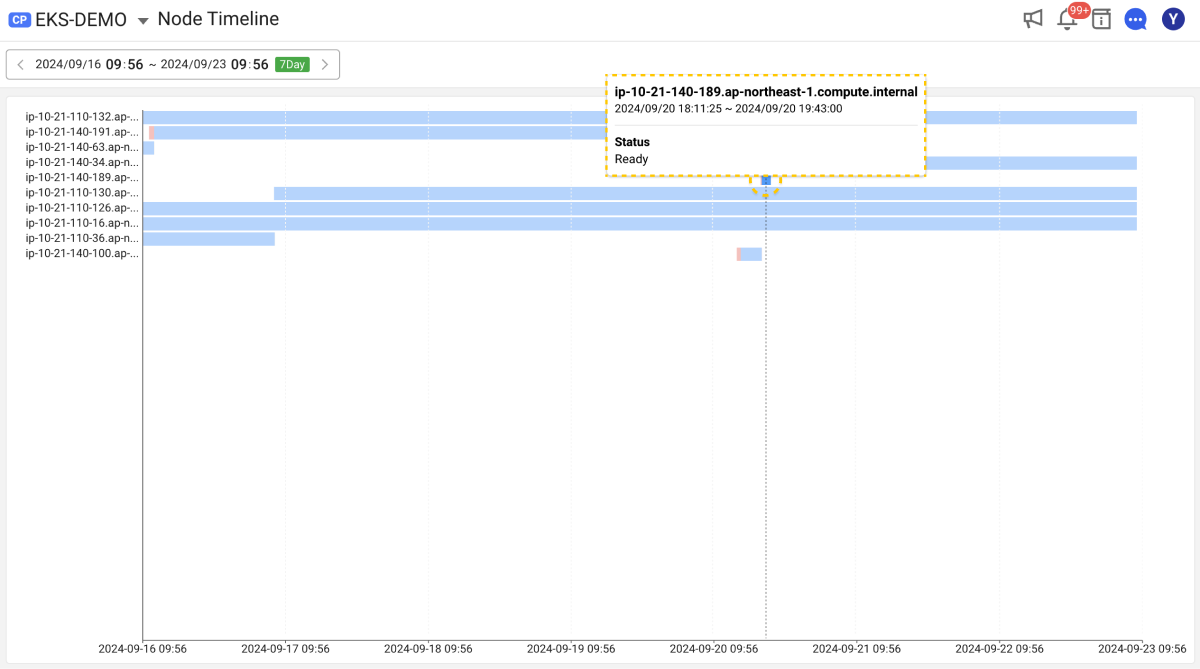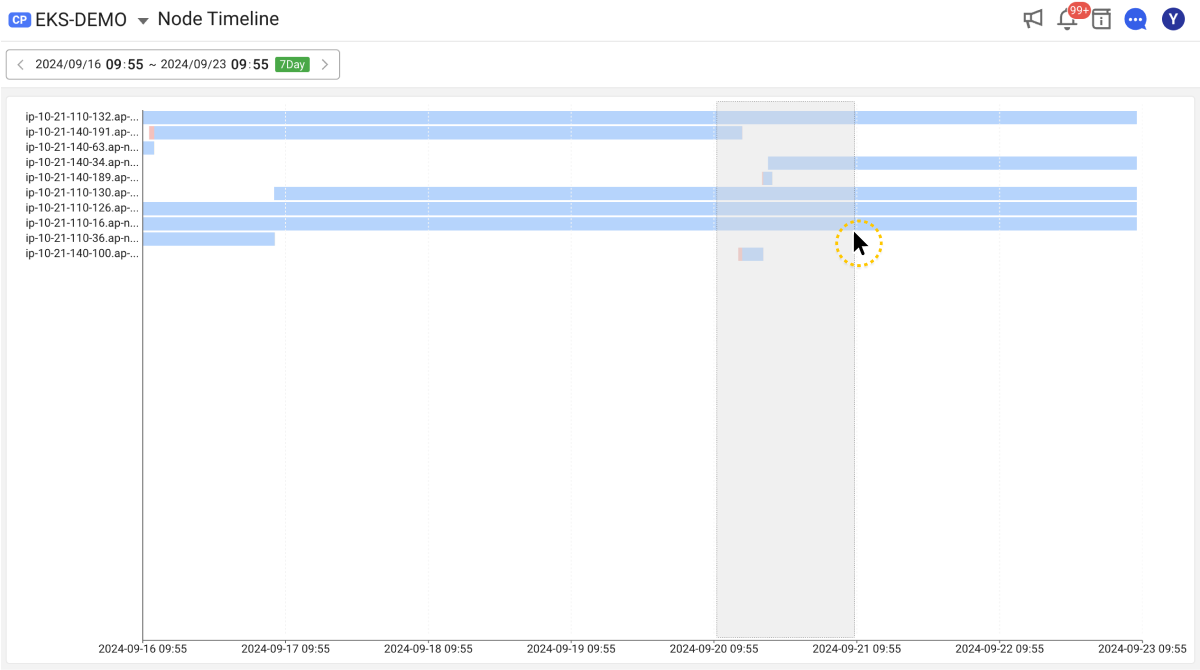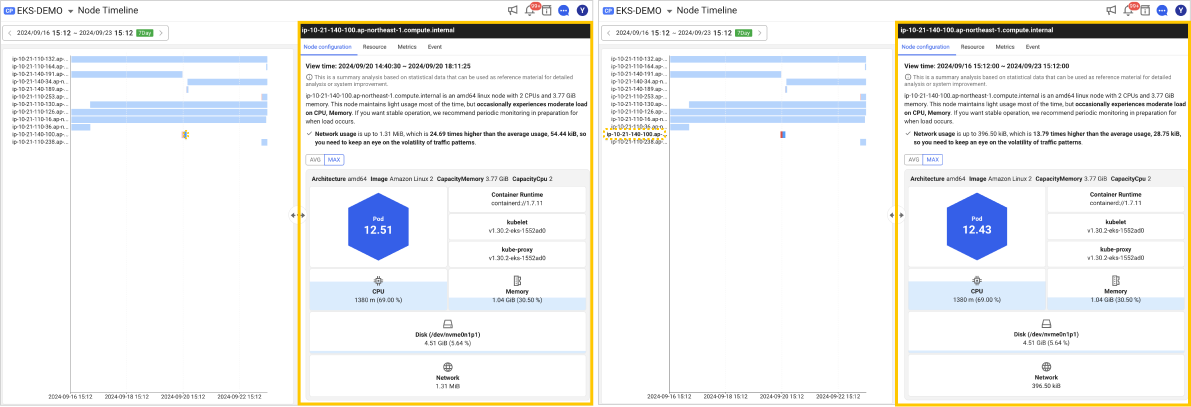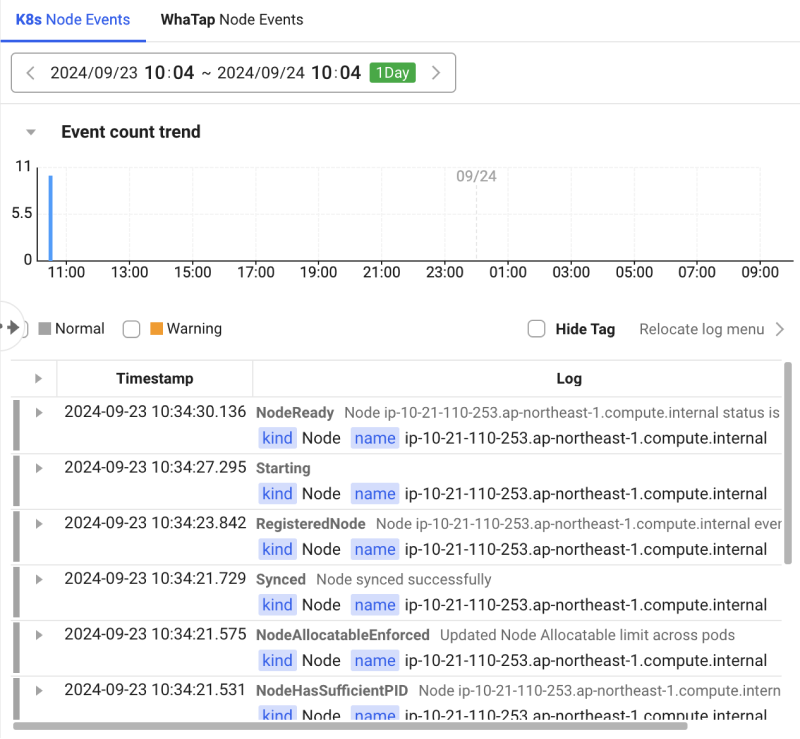Node Timeline
Home > Select Project > Cluster > Node Timeline
Requirements
-
The WhaTap Kubernetes agent 1.7.11 or later is required. Timeline data is provided from the time point collected in version 1.7.11 or later. It reflects the data collected after update of the agent.
-
If it is a Kubernetes cluster project (
CP), you can view the corresponding menu.
The Node Timeline menu provides the feature to trace changes in node state over time. Through this, you can visually identify when a disappeared node was removed and what state the node was in at that time. It is useful for analyzing issues that occurred during cluster operation or checking the past situations.
Basic screen guide
When you enter the Node Timeline menu, a list of nodes collected over the past 7 days is displayed as follows. You can visually see the state changes of nodes along the time axis. If you hover your mouse over each time zone, the start and end times for the zone appears as tooltips together with the node's status (Ready, NotReady, etc.).

You can adjust the time range by dragging the zone on the timeline. Set a desired period to check the past data.

Additionally, when you select a specific period, you can check the node status during the period in detail through Display Detail. For more information, see the Node timeline detail guidance.
-
For more information about the node status, see the following.
-
For more information on how to use the time selector, see the following.
Node timeline detail
Node timeline details can be checked by selecting a specific zone or node as follows:

-
You can view detailed information of a node at the time point through the Display Detail window on the right by selecting a zone to view.
-
You can select a node name to view from the list on the left of the chart and view the overall status of the node during the query period through the Display Detail window on the right.
Node configuration
It provides a summary of the node configuration and overall resource usage selected in theNode configuration tab. You can comprehensively see the hardware and software components of the node. Users can monitor resource usage of nodes and the status of each component, as well as performance and operational stability.

-
Node system specifications
-
Architecture: Hardware architecture used by the node.
-
Image: Information about the operating system image that the node is running on.
-
CapacityMemory: Total memory capacity of the node.
-
CapacityCpu: Total CPU capacity of the node.
-
-
Software configuration
-
Container Runtime: Version of the container runtime used on the node.
-
kubelet: Version of the Kubernetes kubelet running on the node.
-
kube-proxy: Version of the kube-proxy that manages the network features.
-
-
Resource usage status
-
CPU: CPU usage of the node.
-
Memory: Memory usage of the node.
-
Disk: Disk capacity and usage rate on the node.
-
Network: Network throughput
-
-
If you click CPU, memory, disk, or network, the Metrics tab appears that can display the usage trend for the query period.
-
By clicking AVG and MAX, you can see the average usage and maximum usage for the query period.
Resource
Resource In the tab, you can see the list of Pods scheduled on the selected node and the containers and applications running in those Pods. The information appears reflecting 1 minute of resource data as of the end of the selected time zone. This allows you to more clearly identify the node status at the time point and the operation status of each Pod, container, and application.

Metrics
You can check the resource usage trend of the node select in the Metrics tab. You can see the usage changes in CPU, memory, network, and disk based on the average (AVG) and maximum (MAX) values during the query period.

-
AVG: Average usage for the query period.
-
MAX: Maximum usage for the query period.
-
Total: Total traffic usage across multiple network interfaces.
-
In/Out: Inbound (receiving) and outbound (sending) traffic usage for a specific network interface.
Event
You can see K8s Node events and WhaTap Node events that occurred for the time of the timeline in the Event tab. K8s node events include important activity logs within the cluster such as changes in node status, while WhaTap node events provide information about the events triggered based on the user-defined alert criteria.
